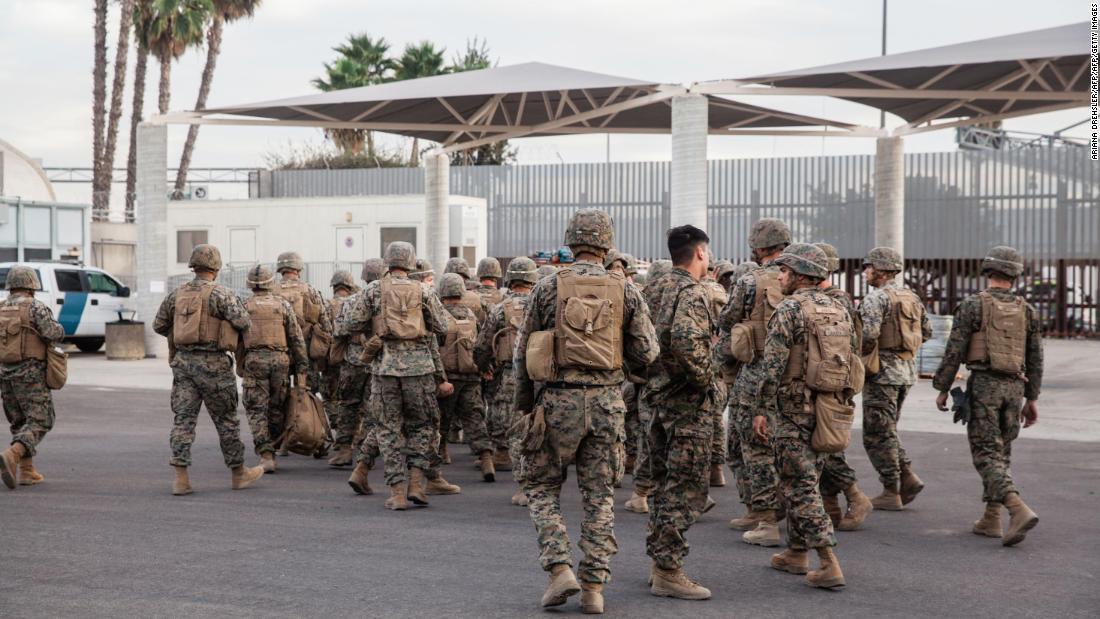
"In response to the December 27, 2018 request from the Department of Homeland Security, Acting Secretary of Defense Pat Shanahan approved Department of Defense assistance to DHS through Sept. 30, 2019," the Pentagon's statement read.
The statement added that the US military "is transitioning its support at the southwestern border from hardening ports of entry to mobile surveillance and detection, as well as concertina wire emplacement between ports of entry."
By the end of November, the military had already placed over 10 miles of wire obstacles in Texas, Arizona and California.
This support request is separate from the White House-led effort to potentially use existing Pentagon funds and personnel to help build new sections of a border wall.
US troops will also continue to provide aviation support to Customs and Border Protection, which has historically involved US military aircraft flying CBP personnel to locations along the border.
Defense officials had previously told CNN that the new mobile surveillance would include troops manning mobile observation posts that would involve them radioing Customs and Border Protection personnel to intercept any detected illegal activity.
Pentagon officials tell CNN that the Defense Department is still determining the force size and composition of troops involved, so it is not clear whether the new military support will involve active-duty troops or National Guard forces.
The approximately 2,300 active-duty troops currently deployed to the border were originally scheduled to come home on December 15 but their deployment was extended to the end of January at the request of DHS.
The cost of that deployment, which peaked at about 5,800 troops, was estimated at about $132 million.
Additionally, President Donald Trump had previously ordered the deployment of National Guard forces to help secure the border. There are about 2,200 National Guardsmen assigned to that mission. That deployment, which also is scheduled to end in September, is estimated to cost $308 million.
The Pentagon has declined to say where the money to pay for the deployments is coming from.
No comments:
Post a Comment